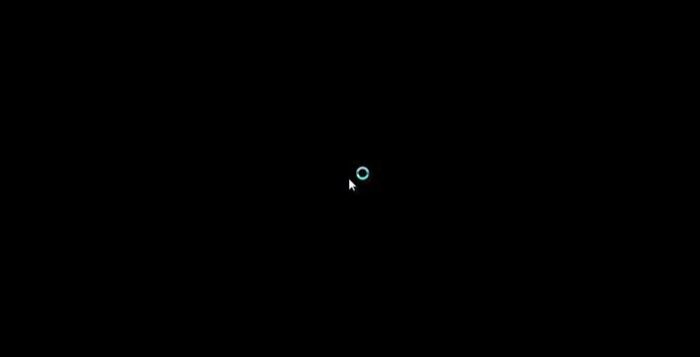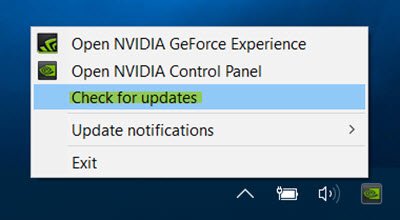If, after a Windows Update or a Driver update, your Desktop and Taskbar keep refreshing with a black screen, then it’s a typical driver issue that has caused the problem. Some of the users have also reported that third-party applications have also caused the problem – but the former is the probable cause. In this post, I will suggest a fix to get rid of Desktop and Taskbar keeps refreshing problem in Windows 11/10.

Desktop and Taskbar keeps refreshing constantly
The funny part of this issue is that it keeps blinking the Taskbar and Desktop every few seconds. It could be in a continuous loop or might happen every 3-4 seconds. You will not be able to see any icons on the Desktop, and the Taskbar will be useless as it keeps refreshing. Even if you right-click on it to open the task manager, it might not work. However, if you use Ctrl + Alt + Del, and then open Task Manager, you should notice high CPU usage for Explorer.exe. So basically its the File Explorer crashing and restarting. You have two ways to solve this Desktop refresh issue:
- Disable Preview of Files on Desktop or remove the files
- Clear Icon and Thumbnail Cache
- Rollback Graphics Driver update
- System Restore
- Uninstall any recently installed software
- Other suggestions.
It is likely that there is a DLL or Program related to UI, and when it crashes, it also crashes the File Explorer along with it.
1] Disable Preview of Files on Desktop or remove the files
One of the users had a problem with PDF files. The Desktop shows a thumbnail preview of the data. Data related to the app was crashing Windows Explorer. You can either choose to remove those files from the Desktop or disable Thumbnail preview of files on the Desktop. You can also choose to hide Desktop icons to check if that’s the exact issue.
Read: Desktop Not responding or Frozen
2] Clear Icon and Thumbnail Cache
Windows maintains Icon and Thumbnail Cache so it can load the Desktop faster or any folder. We suggest you clear the icon and thumbnail cache using the script. Having done that, when you restart File Explorer, it will rebuild the cache.
taskkill /f /im explorer.exe cd /d %userprofile%\AppData\Local attrib -h IconCache.db del /f IconCache.db cd /d %userprofile%\AppData\Local\Microsoft\Windows\Explorer attrib -h thumbcache_*.db attrib -h iconcache_*.db del /f thumbcache_*.db del /f iconcache_*.db start explorer
Execute the command in PowerShell, and you should be through.
3] Rollback Graphics Driver update

If it’s the Graphics Driver that is causing the problem, especially after Windows 10 Update, then it is best to uninstall it. Chances are the driver is going to be a cause of future problems because it doesn’t work correctly.
- Open the Device Manager ( WIN + X, followed by M)
- Expand Display adapters
- Right-click on the adapter, and click on Properties
- Switch to the Driver tab, and then choose Roll Back Driver.
The button will be enabled only when the driver was recently installed. The other way out is to find the previous version of the driver and install it. You will have to go through the OEM website, download and install it.
If you are using an old driver, maybe you need to update your Graphics driver.
4] System Restore
If you have a System Image backup or System Restore point, then I would suggest you try that. It will automatically bring back old settings and drivers, and the issue will be gone most easily.
5] Uninstall any recently installed software
If you have newly installed software related to graphics, try uninstalling it. If the issue is resolved after uninstalling, you may need to find an alternative or contact the developer about the topic. If reported in large numbers, they might have a temporary fix available.
6] Other suggestions
- Try this workaround
- Create a new folder on your desktop
- Copy all your desktop icons into this folder.
- Restart your PC
- Return all the icons back onto the desktop
- Did this help?
- Disable Windows Error Reporting Service using the Services Manager and see
- Disable and software like OneDrive, Adobe Creative Cloud Desktop, etc, which is periodically looking to sync files
- Disable the IDT Audio Driver using the Devive Manager if you have it installed on your system
- If you have any of these installed on your PC, uninstall them and see iCloud/iPhoto, AeroGlass, NVIDIA GeForce Experience.
- Physically clean your keyboard – Maybe a key is stuck.
- Check if this happens in Clean Boot State and if not then try and identify the offender.
Related: Windows screen keeps refreshing itself automatically.
I hope something in the post helps you.
Why is my desktop constantly refreshing?
Your desktop may constantly refresh due to corrupt system files, outdated graphic drivers, or malware infections. It can also be triggered by software conflicts or an overload of cache files.
Why does my taskbar keep resetting?
Your taskbar may keep resetting due to a background process that is interfering or corrupted system files in Windows. To fix this, run the System File Checker (SFC) tool along with the Deployment Image Servicing and Management (DISM) tool and then troubleshoot the problem in Clean Boot State to identify the offending process.
Read next: Explorer does not refresh automatically.
Leave a Reply